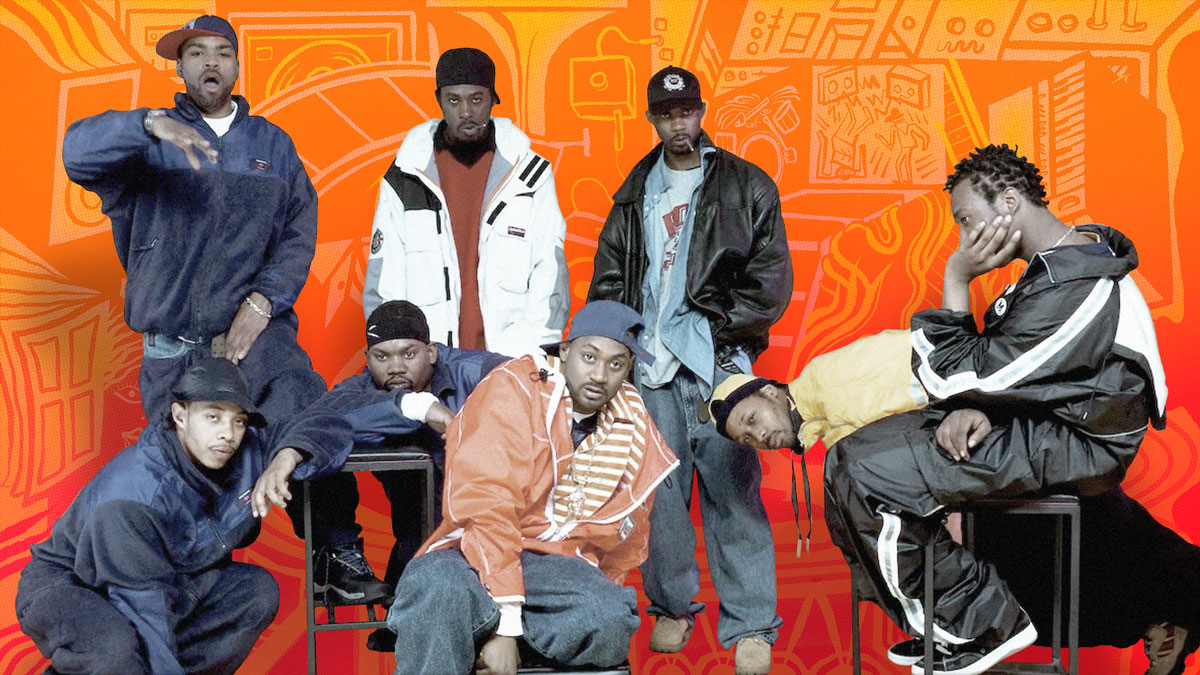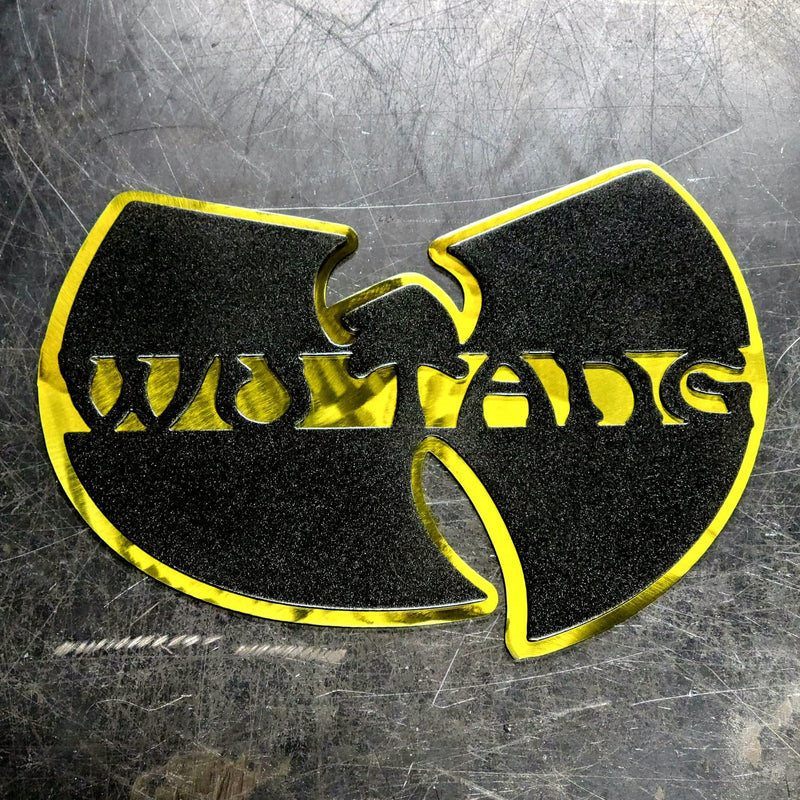New
Wu-Tang Clan Triumph in Las Vegas – A Historic Hip-Hop Residency
The legendary Wu-Tang Clan made history this February by launching Las Vegas’ first full-fledged hip-hop residency at the Theater at Virgin Hotels. This groundbreaking event not only marked a significant milestone for the iconic rap group but also for the city of Las Vegas itself, further cementing its status as a premier entertainment destination. As the Wu-Tang Clan took the stage on February 9th, they ushered in a new era for hip-hop in Sin City, bringing their raw energy, lyrical prowess, and undeniable stage presence to an eager audience.
The Rise of Wu-Tang Clan: From Staten Island to Las Vegas

Before diving into the details of their historic Las Vegas residency, it’s essential to understand the journey that brought Wu-Tang Clan to this momentous point in their career. The group’s ascent from the streets of Staten Island to the glittering stages of Las Vegas is a testament to their enduring impact on hip-hop culture and their ability to evolve while staying true to their roots.
Origins and Formation
The Wu-Tang Clan emerged from the gritty streets of Staten Island, New York, in the early 1990s. Founded by RZA, the group brought together a collective of talented MCs, each with their unique style and persona. The original lineup included RZA, GZA, Ol’ Dirty Bastard, Method Man, Raekwon, Ghostface Killah, Inspectah Deck, U-God, and Masta Killa.
Their formation was rooted in a shared vision of creating a new sound in hip-hop, one that blended raw lyricism with innovative production techniques. RZA’s leadership and production skills were instrumental in shaping the group’s distinctive sound, which drew inspiration from martial arts films, Five-Percent Nation teachings, and the gritty realities of urban life.
The name “Wu-Tang” itself was derived from the 1983 kung fu film “Shaolin and Wu Tang,” reflecting the group’s fascination with martial arts culture and philosophy. This influence would become a defining characteristic of their music and image.
Breakthrough and Impact
Wu-Tang Clan’s debut album, “Enter the Wu-Tang (36 Chambers),” released in 1993, was a game-changer in the hip-hop landscape. The album’s raw, unpolished sound, coupled with the group’s intricate wordplay and unique personalities, quickly garnered critical acclaim and commercial success.
The impact of “Enter the Wu-Tang” extended far beyond its impressive sales figures. It introduced a new aesthetic to hip-hop, one that prioritized grittiness and authenticity over the polished production that dominated much of mainstream rap at the time. The album’s influence can still be heard in contemporary hip-hop, with many artists citing Wu-Tang as a major inspiration.
Moreover, the group’s innovative approach to the music industry set new precedents. Their strategy of allowing members to pursue solo careers while remaining part of the collective created a Wu-Tang brand that extended beyond just the group itself. This approach not only helped sustain their relevance but also allowed each member to showcase their individual talents.
Cultural Phenomenon
As Wu-Tang Clan’s popularity grew, they transcended the boundaries of music to become a cultural phenomenon. Their iconic “W” logo became ubiquitous, adorning everything from t-shirts to tattoos. The group’s slang and catchphrases entered the lexicon of hip-hop fans worldwide.
Their influence extended into fashion, with the Wu Wear clothing line becoming one of the first successful hip-hop merchandise brands. This entrepreneurial spirit, combined with their musical output, solidified Wu-Tang Clan’s position as not just artists but as cultural innovators.
The group’s mystique was further enhanced by their ability to maintain a strong group identity while allowing each member’s individual personality to shine. From Method Man’s smooth charisma to ODB’s unpredictable energy, each member brought something unique to the collective, creating a dynamic that was unmatched in hip-hop.
The Las Vegas Residency: A New Chapter in Wu-Tang History

The announcement of Wu-Tang Clan’s Las Vegas residency marked a significant milestone not only for the group but for hip-hop culture as a whole. This venture into the world of Las Vegas entertainment represented a new frontier for rap music, traditionally underrepresented in the city’s performance landscape.
Breaking New Ground
Las Vegas has long been known for its residencies, featuring pop stars, rock legends, and iconic performers. However, hip-hop acts have been noticeably absent from this scene. Wu-Tang Clan’s residency at the Theater at Virgin Hotels Las Vegas broke this mold, paving the way for hip-hop to claim its rightful place in the city’s entertainment offerings.
The decision to host a Wu-Tang Clan residency speaks volumes about the group’s enduring appeal and the growing recognition of hip-hop as a mainstream art form. It represents a convergence of street credibility and Vegas glitz, a combination that would have seemed unlikely in the early days of the group’s career.
For Las Vegas, this residency signifies a broadening of its cultural offerings, appealing to a diverse audience and potentially attracting a new demographic of visitors to the city. It’s a bold move that acknowledges the significant role hip-hop plays in contemporary music and culture.
The Venue and Setup
The choice of the Theater at Virgin Hotels Las Vegas as the venue for the residency was strategic. With its intimate setting and state-of-the-art sound and lighting systems, the theater provided the perfect backdrop for Wu-Tang Clan’s high-energy performances.
The stage design for the residency was a carefully crafted blend of Wu-Tang’s gritty aesthetic and Vegas spectacle. Elements of the group’s iconic imagery, such as the Wu-Tang logo and kung fu-inspired visuals, were incorporated into a high-tech stage setup. This fusion of street and spectacle created an immersive experience that resonated with both die-hard fans and newcomers to the Wu-Tang universe.
The Opening Night: A Triumph of Hip-Hop Excellence

The much-anticipated opening night of Wu-Tang Clan’s Las Vegas residency on February 9th, 2024, was nothing short of spectacular. As the clock struck 9:35 PM, the Theater at Virgin Hotels erupted with energy as the legendary group took the stage, ready to make history.
Grand Entrance and Opening Numbers
The Wu-Tang Clan‘s entrance was a sight to behold. Dressed in their signature black and yellow hoodies and donning white masks, the group emerged on stage like a force of nature. This dramatic entrance set the tone for what would be an unforgettable night of hip-hop excellence.
The opening numbers, “Protect Ya Neck” and “Wu-Tang Clan Ain’t Nuthing ta F’ Wit,” were delivered with an intensity that immediately electrified the audience. The group’s synergy was on full display as they traded verses with practiced precision, their flow as sharp and incisive as ever.
What stood out was the seamless integration of live instrumentation with the group’s performances. A live band added depth and dynamism to the tracks, while a troupe of dancers brought a visual element that complemented the music without overshadowing it. This blend of live performance and classic Wu-Tang sound created a unique experience that set this show apart from a typical rap concert.
Individual Performances and Crowd Favorites
As the night progressed, each member of the Wu-Tang Clan had moments to shine, showcasing the individual talents that collectively make the group so formidable. Young Dirty Bastard, son of the late Ol’ Dirty Bastard, brought his father’s energy to life on stage, particularly during renditions of ODB classics like “Shimmy Shimmy Ya.”
Method Man, always a crowd favorite, delivered his verses with his trademark charisma and stage presence. His performance of “C.R.E.A.M. (Cash Rules Everything Around Me)” was a highlight of the night, with the entire audience joining in on the iconic chorus.
Ghostface Killah and Raekwon’s tag-team delivery on tracks from their solo albums demonstrated the depth of talent within the group. Their performances reminded the audience of the Wu-Tang Clan’s ability to produce not just great group albums, but also stellar solo projects.
Theatrical Elements and Cultural References
What set this residency apart from a typical Wu-Tang Clan concert was the incorporation of theatrical elements that paid homage to the group’s cultural influences. A cinematic interlude featuring a bare-chested samurai was a nod to the kung fu films that have long inspired the group’s imagery and philosophy.
These theatrical moments, combined with the group’s often humorous onstage banter and roast-heavy monologues, gave the show a multi-dimensional feel. It wasn’t just a concert; it was a full-fledged entertainment experience that celebrated the many facets of Wu-Tang Clan’s artistry and cultural impact.
Legacy and Impact: Wu-Tang Clan’s Continuing Influence

As the Wu-Tang Clan embarked on this historic Las Vegas residency, it’s important to reflect on the group’s enduring legacy and their continuing influence on hip-hop and popular culture at large. Their presence on the Las Vegas Strip is not just a crowning achievement for the group, but a testament to hip-hop’s evolution from a niche genre to a dominant force in global entertainment.
Pioneers of East Coast Hip-Hop
The Wu-Tang Clan‘s impact on East Coast hip-hop cannot be overstated. Emerging in the early 1990s, they helped shift the focus back to New York at a time when West Coast rap was dominating the charts. Their gritty, uncompromising sound and complex lyricism set a new standard for East Coast rap, influencing countless artists who followed.
Their approach to storytelling, which often blended street narratives with references to martial arts films and Five-Percent Nation teachings, created a rich tapestry of lyrics that rewarded close listening. This depth and complexity in their music challenged listeners and fellow artists alike, raising the bar for lyricism in hip-hop.
Moreover, the group’s ability to balance their collective identity with successful solo careers created a blueprint that many hip-hop collectives have since tried to emulate. This model not only sustained the group’s relevance over decades but also allowed each member to explore their individual artistic visions.
Cultural Innovators Beyond Music
Wu-Tang Clan’s influence extends far beyond the realm of music. They were among the first hip-hop acts to successfully branch out into fashion, with their Wu Wear clothing line becoming a significant player in urban fashion during the 1990s and early 2000s. This move paved the way for the now-common practice of hip-hop artists launching their own fashion brands.
The group’s iconic logo, a stylized “W,” has become one of the most recognizable symbols in hip-hop culture. Its prevalence on everything from album covers to merchandise has made it a cultural touchstone, instantly recognizable to fans across generations.
Furthermore, Wu-Tang Clan’s integration of martial arts philosophy and imagery into their music and brand identity introduced many Western audiences to aspects of Eastern culture. This cultural fusion not only set them apart in the hip-hop landscape but also contributed to a broader cultural exchange.
Continued Relevance in Modern Hip-Hop
Despite being active for over three decades, Wu-Tang Clan has managed to maintain their relevance in an ever-changing music industry. Their influence can be heard in the work of many contemporary artists, from the storytelling techniques of Kendrick Lamar to the grittiness of Griselda Records’ output.
The group’s ability to adapt to new platforms and media has been crucial to their longevity. From documentary series to podcasts, Wu-Tang Clan has found ways to share their story and music with new audiences. Their Las Vegas residency is yet another example of their willingness to explore new avenues and bring their music to different contexts.
Moreover, the individual members’ continued success in various fields – from RZA’s work in film scoring and directing to Method Man’s acting career – has kept the Wu-Tang brand in the public eye, even when the group isn’t actively releasing music or touring together.
Conclusion: Wu-Tang Clan’s Enduring Legacy
As the curtain falls on the opening weekend of Wu-Tang Clan’s historic Las Vegas residency, it’s clear that this moment represents far more than just another milestone in the group’s illustrious career. It stands as a testament to the enduring power of hip-hop, the cultural impact of Wu-Tang Clan, and the genre’s rightful place at the forefront of mainstream entertainment.
From their humble beginnings in Staten Island to commanding a residency on the Las Vegas Strip, Wu-Tang Clan’s journey embodies the very essence of hip-hop’s evolution. Their ability to maintain their artistic integrity while adapting to new contexts and audiences is a rare feat in the music industry. This Las Vegas residency not only celebrates their past achievements but also points towards a future where hip-hop continues to break new ground and reach new heights.
As fans from around the world converge on Las Vegas to experience this unique blend of raw hip-hop energy and Vegas spectacle, it’s clear that Wu-Tang Clan’s influence transcends generations and cultural boundaries. Their music, their message, and their enduring legacy continue to resonate, proving that Wu-Tang Clan is, indeed, forever.
